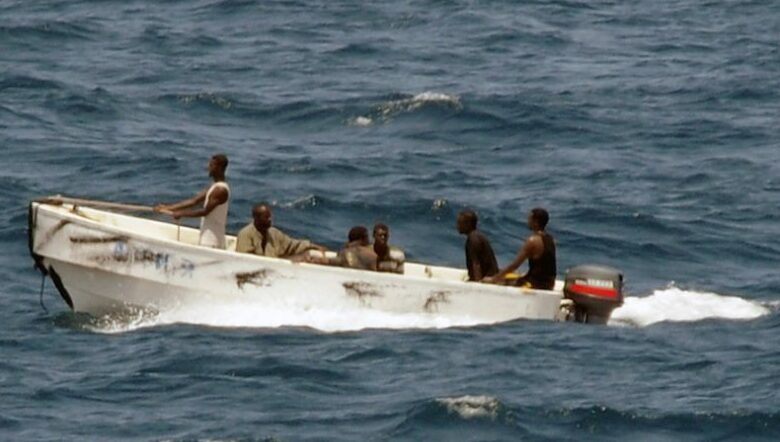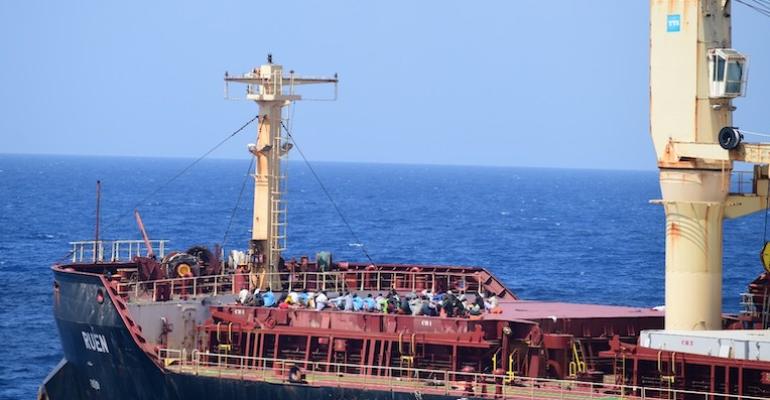International Freight for Heavy Industry
Surge in Somali Piracy Spurs Demand for Maritime Security
06/06/24
Recent Attacks Highlight Escalating Risks and Growing Market for Armed Guards
In the wake of renewed piracy off the Somali coast, the maritime industry faces increasing threats, prompting heightened security measures and soaring costs for onboard armed guards. Captain Rahul Khanna, global head of marine risk consulting at Allianz Commercial, emphasised the urgency of the situation: “Shipping is vulnerable to extortion and pirates may be emboldened by what is going on in the Red Sea. It could just be opportunistic, but we must be prepared for the prospect that we will see a period of renewed hijackings and piracy attacks at sea.”
This resurgence in piracy has driven up the demand and costs for private maritime security companies (PMSCs), as shipping companies scramble to protect their vessels. According to Splash247, prices for private maritime security guards have skyrocketed this year.

The increased reliance on PMSCs has reignited calls for greater regulation of the industry. Seagull Maritime, a prominent maritime security firm, stressed the importance of vigilance: “Shipping companies and masters need to remain vigilant and increase their security on board their vessels as well as report any suspicious activity through the necessary channels.”
Recent Piracy Incidents
After a lull in pirate activities, Somali pirates have resumed attacks, capturing several vessels in recent months. Notably, 18 dhows have been hijacked since November last year, with six or seven still believed to be under pirate control. The European Atalanta Naval Force (EU NAVFOR ATALANTA), which oversees anti-piracy operations in the Indian Ocean, reports the presence of at least two pirate action groups off the Somali coast near Socotra.
In late May, the German-managed, Liberia-flagged MPP Basilisk was boarded by pirates 742 km southeast of Mogadishu. The crew retreated to the citadel, avoiding capture, while the ship’s master, who did not seek shelter, sustained a non-life-threatening gunshot wound. The pirates fled before military forces arrived, thanks to the crew’s discipline and swift actions.
Another late May incident involved a Panama-flagged cargo ship northeast of Eyl, which issued a piracy distress call after being approached by three dhows over five hours. The timely response by maritime security forces prevented a successful hijacking.
Earlier in May, a merchant vessel was approached by a small boat with armed men 170 km northwest of Bosaso, Somalia. The vessel altered its course, sounded its horn, and fired warning shots, deterring the pirates.

In March, the Bangladeshi ship Abdullah was seized and released after a $5 million ransom was paid, raising concerns about encouraging further attacks. EU NAVFOR ATALANTA warned that such payments could lead to more dhow hijackings and subsequent skiff attacks on merchant vessels.
Also in March Indian commandos boarded and recaptured the Maltese-flagged Ruen. The ship was hijacked in December last year. The Indian commandos successfully rescued all 17 hostages and 35 accused Somali pirates were transferred into police custody.
Calls for Enhanced Vigilance and Regulation
The resurgence of Somali piracy has reignited debates over the need for more stringent regulation of the maritime security industry. The International Chamber of Commerce’s Secretary-General, John Denton, underscored the critical nature of the situation: “The resurgence of Somali pirate activity is worrying, and now more than ever it is crucial to protect trade, safeguard routes, and the safety of seafarers who keep commerce moving. All measures to ensure the uninterrupted free flow of goods throughout international supply chains must be taken.”
Ships sailing near the Somali coast are urged to maintain a heightened state of vigilance. EU NAVFOR ATALANTA has identified several potential pirate camps along the Somali coast between Xaafuun and Garacad, with a hotspot north of Eyl. Pirate strategies often involve using hijacked vessels as motherships to blend in with regular maritime traffic before deploying smaller skiffs for attacks.
As piracy reemerges as a formidable threat, the maritime industry must navigate the complex landscape of security, costs, and regulatory challenges to safeguard the vital arteries of global trade.
![[text] IMB PIRACY REPORT January-March 2024Top right corner has the blue waves International Maritime Bureau logo. Two pie graphs. The left most shows the number of incidents reported. 6 attempted, 2 hijacked, 1 fired upon and 24 boarded for a total of 33 incidents. The pie graph on the right shows the impact on the crew. 9 crews kidnapped, 1 crew threatened, 35 crews held hostage for a total of 45 crews impacted. Below the pie graph is a line graph showing reported incidents in the waters off Somalia. The graph shows zero incidents in Q1 2020, one in Q1 2021, 0 again in both Q1 2022 and 2023 and five incidents in Q of 2024. To the right of the line graph is a statistic [text] 79% of vessels attacked were boarded.](https://freightplus.com/wp-content/uploads/2024/06/PiracyStats-1024x661-1.jpg)



